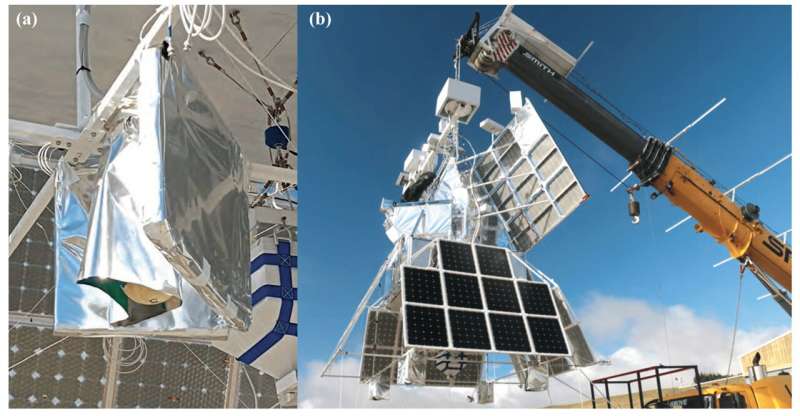An international team of astrophysicists, aerospace engineers and balloonists has found that data recovery capsules are a viable means of ensuring data integrity in the event of loss of flight capabilities or communications abilities in balloon-based telescope projects. In their paper published in a special issue of Aerospace, the group describes their test of four Data Recovery System (DRS) capsules containing 5 TB of telescopic data sent aboard a helium-filled, super-pressurized balloon.
Astrophysicists have found that it is much cheaper to send telescopes to the edge of space using balloons rather than rockets. Such balloons can also remain aloft for long periods of time, allowing the telescope to capture enormous amounts of data. In this new effort, the research team sent a superBIT telescope to the Earth's stratosphere using a helium-filled, super-pressure balloon—its mission was to collect astronomical imaging from above approximately 99.5% of the Earth's atmosphere.
As part of the mission, the research team also sent four DRS capsules as a means of backing up data collected by the telescope. The idea was that if the balloon and/or telescope were lost, the capsules and their backup data could drift slowly down to earth beneath a parachute, where they could then be retrieved by a ground crew.
The mission was launched on April 16, with the balloon and its cargo rising to 40 kilometers. Over the following 40 days, the telescope took pictures of galaxy clusters with the goal of recording gravitational lensing as part of an effort involved in proving the existence of dark matter. Data was transmitted using Starlink and NASA's TDRSS. The Starlink connection was lost on May 1 and the connection with TDRSS began to fail approximately three weeks later.
A decision was made to bring down the telescope using an attached parachute. Prior to its descent, two of the four DRS capsules were released with their own Global Navigation Satellite System receivers and communications systems that allowed for tracking their whereabouts. It was noted at release that only three of the four capsules were functioning. The one that was not functioning was not released and another was kept on board to see how it would fare if left with the balloon.

The team lost communications with the capsules for most of the trip down as a result of their batteries freezing. After they landed, the batteries warmed and communications resumed, allowing the researchers to recover both of the functioning capsules and to retrieve the stored data. The team describes the use of DRS capsules as a successful means for preserving telescopic data sent aloft on balloons.
More information: Ellen L. Sirks et al, Data Downloaded via Parachute from a NASA Super-Pressure Balloon, Aerospace (2023). DOI: 10.3390/aerospace10110960
© 2023 Science X Network



